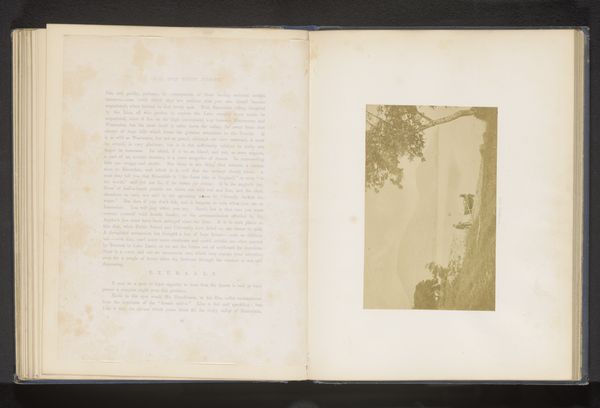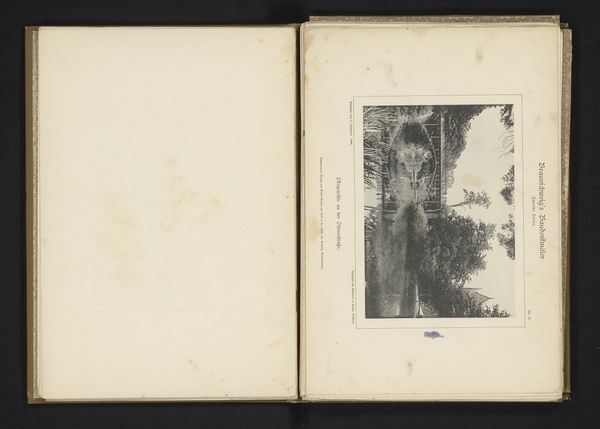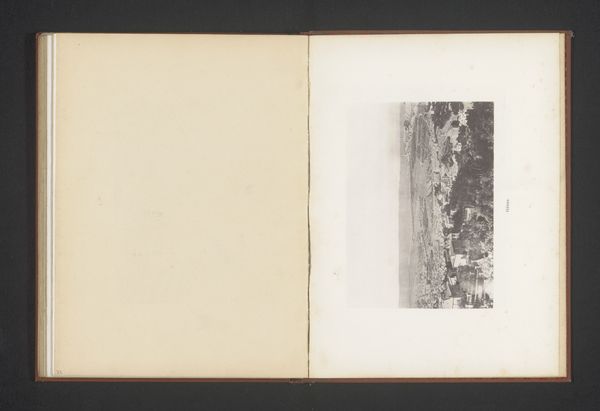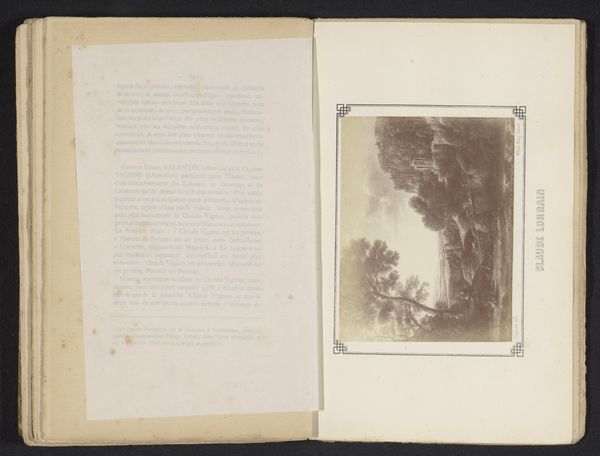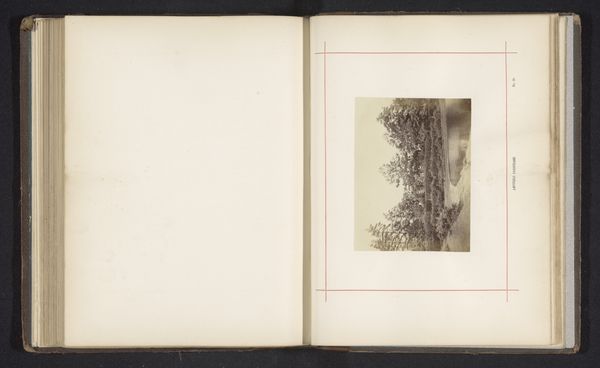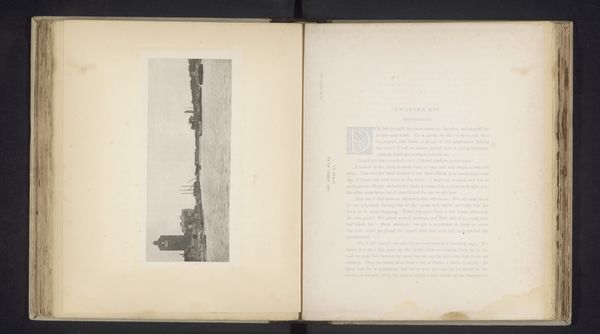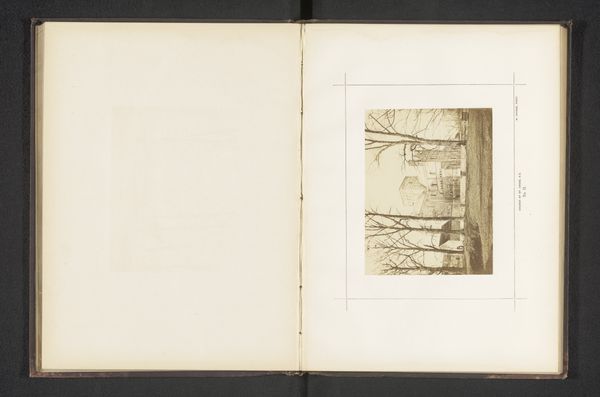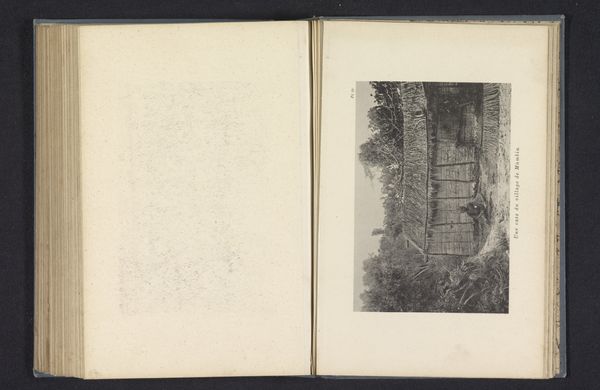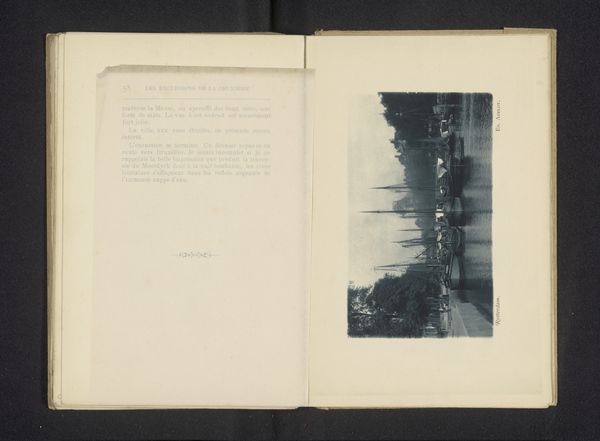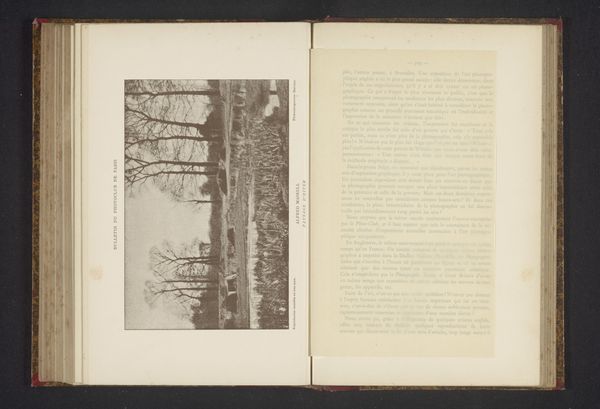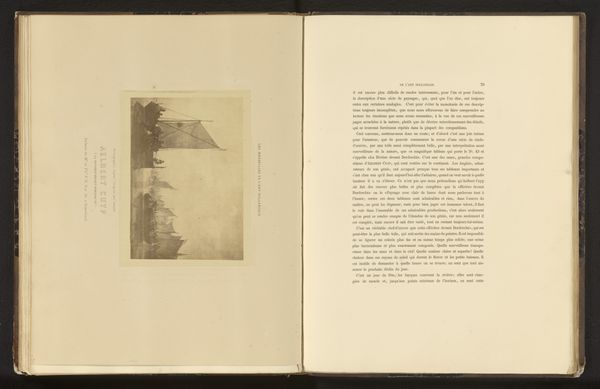
Fotoreproductie van een tekening van badgasten die worden opgejaagd door een stier door David Cox before 1873
0:00
0:00
drawing, print, photography
#
drawing
# print
#
landscape
#
photography
Dimensions: height 137 mm, width 199 mm
Copyright: Rijks Museum: Open Domain
Editor: Here we have a photographic reproduction of a drawing by David Cox, made before 1873, titled *Fotoreproductie van een tekening van badgasten die worden opgejaagd door een stier*. It depicts bathers being chased by a bull. It looks a bit chaotic, doesn't it? How do you interpret this work? Curator: It's interesting to consider this scene within its historical context. Cox, working in the 19th century, captured a moment of leisure disrupted by nature. The bathers, likely members of the rising middle class, are suddenly vulnerable. Think about the broader narrative here – the illusion of control and safety shattered by the unpredictable. Does it raise questions about class, privilege, and our relationship to the natural world? Editor: It does! I hadn't thought about it as a commentary on social class. Curator: And think about the bull. Is it merely a dangerous animal, or does it represent a force resisting the encroachment of urban life onto the rural landscape? Consider how land use, even leisure, had profound political dimensions at the time. Editor: So, it’s more than just a funny scene. It’s about power dynamics, right? Curator: Exactly. Cox, perhaps unwittingly, offers us a glimpse into the anxieties and tensions of his era. This drawing hints at complex issues concerning humanity, nature, and social order. The print becomes a medium through which we question societal values. Editor: This has opened up a new way of seeing the artwork. I'll consider the role of art in uncovering political layers in the everyday. Curator: Yes. Viewing art as social commentary allows us to connect to those crucial questions concerning people, power, and place.
Comments
No comments
Be the first to comment and join the conversation on the ultimate creative platform.

